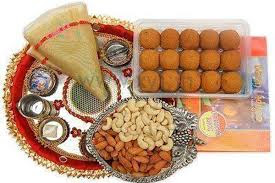 |
| Til ke Laddu |
Glimpses of India with Koyeli
Wednesday, 13 January 2021
Festivals of India
Friday, 30 October 2020
Festivals of India
|
|
|||||
|
Sargi
Baya
Saturday, 20 June 2020
Lockdown Saga
“COVID 19” – the word has changed the World around us! It just has shaken the World and all the systems, we have been following since birth. Mid of January 2020, my husband told me about the disease, when it became fatal in China. I was then not so much worried, because I couldn’t imagine that it could spread in India, too. After that day, one after one news were coming from our friends, who are settled in foreign countries like America, Italy, Germany etc. And finally, COVID 19 arrived in India, was first reported on 30 January 2020. The situation has deteriorated day by day. Prime Minister of India, Sri Narendra Modi, announced 'Janta Curfew', a 14 hour voluntary public curfew on 22 March; and ordered a nationwide lockdown for 21 days, on 24 March, 2020.
I live in Malda, in West Bengal, with
my husband and rest of our family lives in Burdwan, another district in West
Bengal. I was very scared for my parent and in-laws, they all are aged; at the
same time, I was afraid of the situation, we have to face. We were compelled to grant paid leave to our
househelps from mid of March. I was just puzzled then. I didn’t understand
how to manage all the daily chores! Here came my husband with his hands to help
me out of this situation. I’m quite lucky I guess! Generally my
hubby remains very busy with his works, but in this lock down period, he was
instructed to do his works from home. So, he is sharing my loads happily. I
really consider myself lucky and blessed, getting such a man as my buddy!
The smile of my hubby made me smile; and I felt, the World around me became happier! I felt, that #ShareTheLoad makes relations better, happier and closer. All the lock down period, we leave together without any stress; because, we share our thoughts during work together. This lock down teaches me #ShareChoresMultiplyLove!
I will #ShareTheLoad and help in household chores in association with Ariel India and BlogAdda.
Wednesday, 10 June 2020
Festivals of India in the month of June
Urs Festival
 |
| Tomb of the Sufi Saint Khwaja Moinuddin Chisti |
The Khwaja came from Persia and established the Chishtia order of fakirs in India. He is popularly known as Gharib Nawaz (protector of the poor) because he dedicated his entire life to the service of mankind. His spartan life spanned almost a hundred years and he embraced death in solitude while he had withdrawn to his cell for six days, asking not to be disturbed.
 |
| The shrine |
The Dargah Sharif in Ajmer is the site of the largest Muslim fair in India. More than five lakh devotees belonging to different communities gather from all parts of the subcontinent to pay homage to the Khwaja on his Urs (death anniversary) during the first six days of Rajab (seventh month of the Islamic calendar.) Pilgrims from all over the world gather to pay homage. Qawalis (poems) are presented in the saint's honor and religious assemblies (mehfils) and 'fatihas' (mass prayers) are held. The lakeside town of Ajmer also called Ajmer Sharif (holy) comes alive during the Urs which attracts thousands of devotees irrespective of caste, religion etc. The largest Muslim fair in India that springs up at this time displays religious objects, books, rosaries, embroidered carpets and silver ornaments and much more.
 |
| Pilgrimages are carrying Chadar to the shrine |
The Urs is initiated with the hoisting of a white flag on the dargah by the Sajjada Nashin (successor representative) of Chishtis. It is done on the 25th of Jamadi-ul-Akhir (sixth lunar month), with the accompaniment of music. On the last day of the sixth month, the Jannati-Darwaza (gateway of heaven) is flung open early in the morning. People cross this gate seven times with the belief that they will be assured a place in heaven. On the 1st of Rajab, the tomb is washed with rose water and sandalwood paste and anointed with perfumes. This ritual is called ghusal. The Sajjada Nashin then covers the tomb with an embroidered silk cloth.
Ajmer is 132 kms. Southwest of Jaipur and 198 kms. East of Jodhpur. It is connected by road to Jaipur, Jodhpur, Bikaner, Udaipur and Kota. Ajmer is a railway junction on the Delhi-Ahmedabad section of the Western Railway. During the Urs, special buses ply from cities all over India carrying people to Ajmer and back.
Image Courtesy: https://www.google.co.in/search?q=urs+festival+ajmer&tbm

























